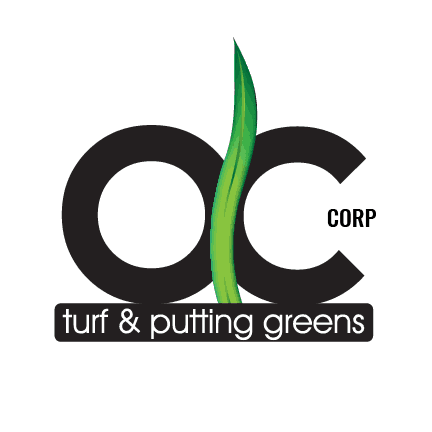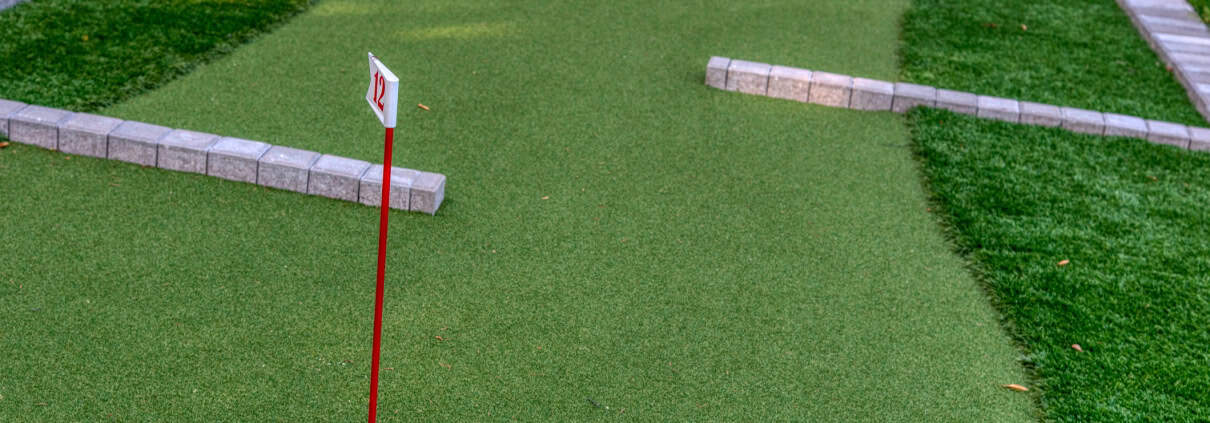6 Common Synthetic Grass Putting Green Installation Mistakes and How To Avoid Them
A synthetic turf installation offers countless benefits for Southern California homeowners, but it requires considerable skill to ensure you install an artificial turf putting green correctly. If your surface is uneven or seams are misaligned, your gameplay will be disrupted, or, even worse, your lawn can deteriorate prematurely, requiring costly repairs.
At OC Turf & Putting Greens, we’re experts on synthetic grass installation in Laguna Niguel, CA, professionally crafting landscapes for homeowners. Over our years of experience, we’ve come across some common mistakes that homeowners make when attempting to DIY their turf putting green installation. Here are six of the most common errors and what you can do to avoid them — besides hiring a professional synthetic grass installer.
Using Incorrect Synthetic Turf Products
Your backyard putting green is only as good as the products you use. If you choose unsuitable synthetic grass products, you’ll never achieve the flawless putting green surface you want. Your custom putting green also may not hold up to frequent use, resulting in premature repairs or replacement. The best artificial turf products for a backyard putting green are designed specifically for putting green applications.
These putting green turf products feature a short pile height and high density, which creates a sturdy and smooth surface for an accurate, consistent ball roll. You should also check the quality of your backing, as these features dictate the durability of artificial grass. The most durable backings are made of polyurethane and offer efficient drainage to avoid waterlogging and bacteria buildup.
Poor Ground Preparation
Creating a backyard putting green is similar to building a house. First, you need to create a sturdy foundation. Ground preparation is the foundation for your synthetic turf putting green and is a critical step in creating a luxurious, long-lasting course.
Start by clearing the surface and removing existing grass, debris, weeds, and stones. Next, dig 3-4 inches into the ground and smooth the surface before compacting the subsoil firmly to ensure it’s sturdy and even. You can add crushed stone or other aggregate to create a firm base for your backyard putting green. Failure to create a proper sub-base can result in wrinkling, divots, and other uneven areas that inhibit gameplay and even pose a safety hazard. It also reduces the lifespan of your turf, requiring premature replacement.
Inefficient Drainage
Drainage is critical to maintaining a clean, healthy, and high-quality artificial turf putting green. Inefficient drainage can lead to standing water, which promotes bacteria growth and deteriorates your synthetic turf over time — to say nothing of the disruptions it causes to your gameplay.
When establishing your sub-base, incorporate a slight slope, at roughly 1 percent, to ensure fluids are properly drained and directed away from your backyard putting green. To increase drainage efficiency, add a drainage grid between artificial turf products and the sub-base.
Subpar Seam Alignment
Seams refer to the points where individual synthetic turf sections meet and are adhered together. Properly aligning and securing these seams is essential to prevent disruptions to your gameplay experience. If you don’t, you’ll risk slight lifts or bumps along your course, which impede ball roll and produce a subpar playing experience in your backyard putting green.
With patience and care, align adjacent turf sections and secure them with seam tape or glue. Don’t let artificial grass pieces overlap or stretch. Make sure that your turf rolls are both facing the same direction, with the blade growth facing the same way. While it may feel tedious, properly aligning seams will ensure a smooth, even green that looks and feels more like real grass.
Not Securing the Artificial Grass
Improperly secured turf can buckle under the weight of frequent foot traffic, disrupting your ball roll and creating trip hazards. We recommend using 6-inch galvanized nails or turf staples to secure the edges of artificial grass, guaranteeing their security for years of gameplay. Position these nails or staples 3 to 4 inches apart, and ensure the synthetic turf is pulled taught when securing it.
Uneven or Improper Infill Application
Artificial grass infill is an essential accessory for all backyard putting greens. It provides ballast and holds turf fibers upright, guaranteeing consistent support and smooth ball roll. Infill gives your lawn the support it needs to stay pristine for years, regardless of heavy foot traffic or weather conditions. Without proper infill, the ball will not roll smoothly, and the turf will not have the desired appearance.
When installing your artificial grass putting green, make sure to evenly apply and brush infill through your lawn. It’s also important to brush the infill into the base of the turf fibers, rather than simply pouring it on top. This will help to evenly distribute the infill and ensure that it performs optimally.
If you want to guarantee a PGA-quality putting green, trust OC Turf & Putting Greens with your synthetic grass installation. We offer superior services backed by market-leading products and unmatched customer support. As a locally-owned business, we bring exceptional care to each lawn project, from basic residential turf to complex projects like custom putting greens. Call OC Turf & Putting Greens today at 888-526-2289 or contact us online for a free quote!




